4 delicious ways to eat chestnuts: Chestnut Chocolate Cake, Chestnutella, Sweet Chestnut Spread, Chestnut Honey Balls
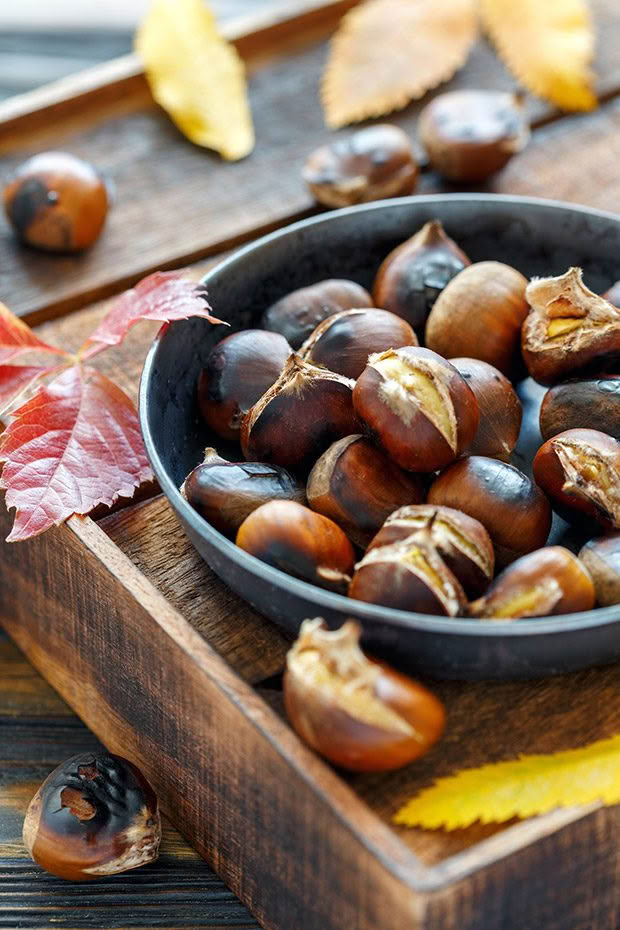
This quintessential autumn nut can be used in cake, snack balls and even a Nutella-like spread.
Words: Kristina Jensen
Add a chestnut or two to your orchard today and you’ll be doing a big favour for generations to come. We are lucky that settlers planted so many when they first came to these fair shores. Most chestnut trees begin to bear fruit only after 15 years, reaching optimal yields once they are 40+ years old.
Harvesting chestnuts can be dangerous but is well worth it. We wear gumboots and thick gloves during harvest, then ‘crack’ open each spiny shell by pressing on it with a boot. The chestnut will usually open up allowing you to reach in carefully and extract the nut.
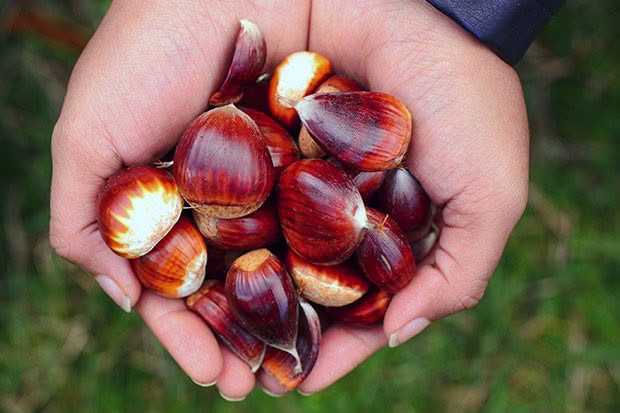
Some trees will have pods that contain two or three flattened empty shells and no kernels. This is because chestnut trees require cross pollination (carried out by wind and insects) from a different compatible variety to ensure good nut production so you need to plant at least two.
GET THE NUT RIGHT
You can tell the difference between a ‘conker’ – an inedible horse chestnut – and an edible chestnut by the spikes on the outer shell. Horse chestnuts have short bumpy spikes on a smooth ball-shaped fruit where you can see the surface between the spikes, whereas edible chestnuts are super prickly like little hedgehogs. Once shelled, edible chestnuts have a point, conkers don’t.
The easiest way to eat a chestnut
One of the oldest and most common ways to cook chestnuts is to roast them. If you want to try this yourself, this is important to know: before roasting, poke holes with a fork or make slits with a knife in each chestnut to avoid explosions.
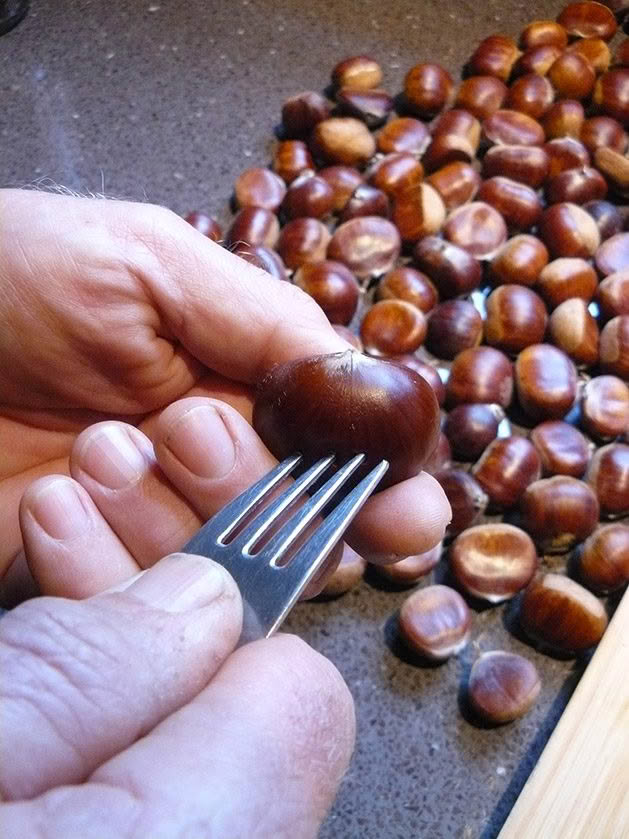
Be warned
Do not open the oven door if your chestnuts do start to explode. You and your kitchen will be instantly and painfully splattered in very hot nut ‘meat’. Trust me – don’t do it!
THE BEST STORAGE METHODS FOR CHESTNUTS
Chestnuts are difficult to store as they contain 50% water when fresh. If you’ve only got a few, keep them in the vege bin in the bottom of the fridge in a plastic bag with holes poked in it.
If you have freezer space, follow the instructions below. If you don’t, layer them in a box, one layer of nuts then a layerof newspaper, and keep them in a dark, cool place, checking regularly for mould. Depending on the variety, they can keep from 2-6 months in this way.
Kristina’s favourite: the freezer method
1. Bring a pot of chestnuts covered in water to the boil and keep them on a low boil for 20 minutes.
2. Drain off the water and tip the chestnuts into a flat dish, like a roasting pan to cool them down quickly.
3. As soon as they are cool enough to handle, cut them in half and scoop out the nut ‘meat’into small plastic containers or resealable plastic bags for freezer storage.
Bonus tip:
As most recipes call for 1 cup of nuts, I tend to measure a set amount, eg one cup, into each bag/container so I know I’m getting the right amount without having to measure again.
Chestnut Chocolate Cake
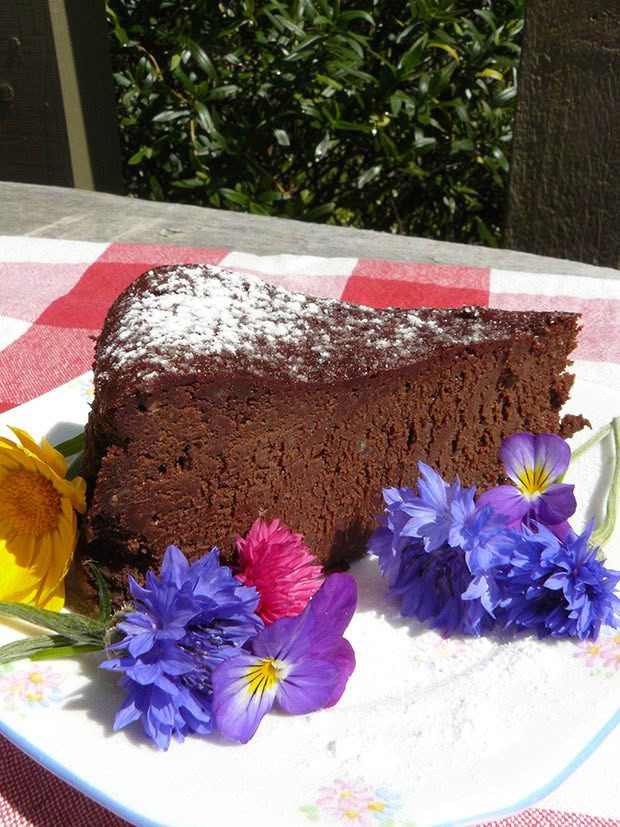
This is a very soft cake, a bit like mousse, and is delicious warm or cold. You have to be very gentle removing the cake from the tin when it’s warm or it can end up falling apart, but once it has cooled and set it is firm and easy to slice. It’s a great alternative to Christmas pudding and, being gluten-free, you can save it for special occasions when you need to cater for dietary requirements.
INGREDIENTS
250g dark chocolate
250g unsalted butter
250g processed chestnuts (as per the ‘freezer’ method above)
250ml milk
4 large eggs
125g cup caster sugar
METHOD
Melt the chocolate and butter together slowly in a double boiler. Set aside to cool down. Separate the eggs, put the yolks into a bowl and beat with the sugar.
Add the cooled chocolate and butter mix plus the milk and chestnuts and whisk rapidly or beat with an electric beater until you have a smooth batter. Beat the egg whites until stiff and gently fold them into the batter.
Transfer the mixture into a greased, lined 23cm springform tin. Bake for 25-30 minutes at 170˚C until the cake has just set but is still slightly wobbly.
Kristina’s Chestnutella
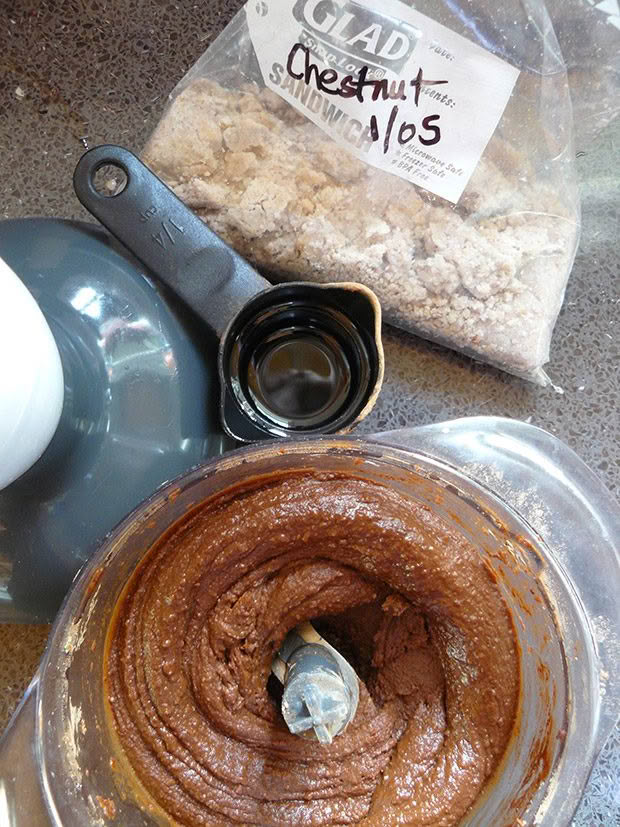
Whenever I make this, quarter of it never makes it to the jar!
INGREDIENTS
1 cup processed chestnuts (as per the ‘freezer’ method)
¼ cup raw cacao or cocoa powder
2 heaped tbsp good bush honey
¼ cup sunflower oil (or more if required)
METHOD
Whiz all ingredients together in a small food processor until you have a spreadable consistency.
Sweet Chestnut Spread
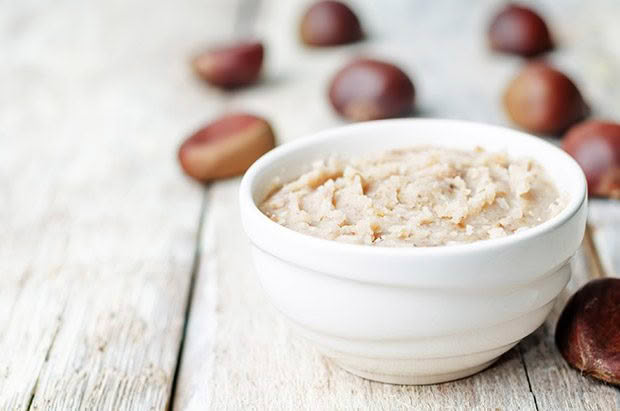
This recipe was passed onto me from a German friend who remembers her mother making it as one of her winter stores. It kept well in their cool cellar for 2-3 months and in the fridge in glass jars. It tastes great on scones and pancakes and makes a yummy addition to yoghurt.
INGREDIENTS
2 cups chestnuts
2 tbsp manuka honey
lemon juice, freshly squeezed
METHOD
Roast and peel chestnuts. Whiz them up in a food processor with manuka honey. Add lemon juice until you achieve a spreadable consistency.
Chestnut Honey Balls
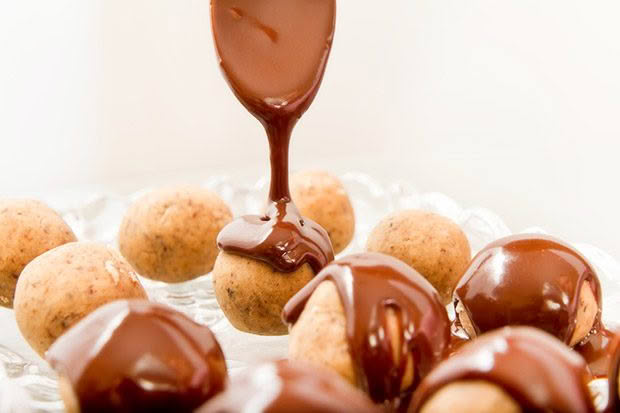
These can make an interesting talking point at a pot luck dinner. Here’s a great way to introduce chestnuts to your friends. See if they can guess what type of nut they are made from and watch their surprise when you tell them it’s chestnuts.
INGREDIENTS
3-4 cups ground roast chestnuts
zest of two lemons
2-3 tbsp honey
high-quality chocolate for melting (optional)
METHOD
In a bowl, mix most of the ground chestnuts thoroughly with the lemon zest and, adding the remaining nuts if needed until you have a rollable consistency.
Roll small balls of the mixture with your hands, place on a plate and refrigerate for two hours. Dip each ball in melted chocolate, then return to the fridge until set.

